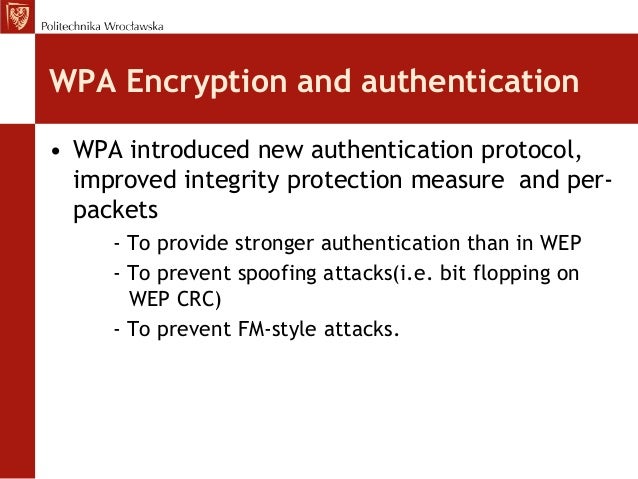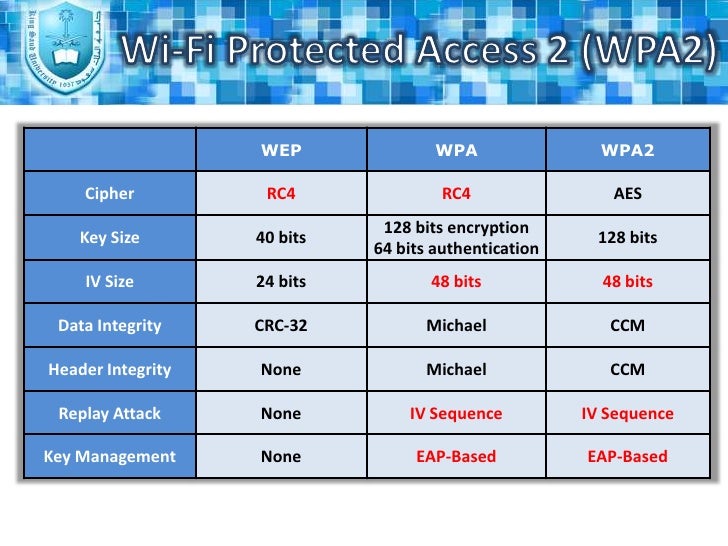
You must understand that these signals can easily be captured with common gadgets, and unless the data is encrypted, it can be read by whoever is eavesdropping on your network. The data being transmitted will then be converted into a radio signal. It starts when you are sending or receiving data from one end to another through Wi-Fi. To fully understand the differences between WEP, WPA and WPA2, one should know how network security works.

One way to counter this vulnerability would be disabling your WPS. While it does take at least 2 to 14 hours for an attacker to get inside your network system, not to mention the hard work put into it, there is still a major security concern. This means it’s as secure as it can be, especially for home networks.Īs with WPA, unfortunately, a vulnerability of WPA2 is through the Wi-Fi Protected Setup (WPS). With these significant changes, cyber-attacks are easier to deflect since attackers need to be inside the Wi-Fi network in order to access other devices in the network.
#Wep vs wpa encryption code
Aside from that, CCMP (Counter Cipher Mode with Block Chaining Message Authentication Code Protocol) was also introduced as a replacement to TKIP (still available in WPA2 as a fallback).ĭifference between a Bobcat and a Mountain Lion Unlike in WEP and WPA, AES (Advanced Encryption Standard) algorithms were implemented. WPA2Īlso known as Wi-Fi Protected Access 2, WPA2 is also a security protocol and was the intended replacement for WPA. While it is said to be better than the previous security protocol (WEP), WPA was only an intermediate measure while waiting for a more secure and more complex wireless network security, the WPA2. Despite all of the improvements, public demonstrations still show that WPA is vulnerable to intrusion. Said to be the answer to the major vulnerabilities of the WEP standard, WPA includes the Temporal Key Integrity Protocol (TKIP) to increase cryptographic strength from RC4, and it also includes message integrity checks to determine if packets passed through the network have been altered. It became available in 2003, just a year before WEP was deprecated. WPAĪlso known as Wi-Fi Protected Access, WPA is a security protocol and security certification program that is supposed to an answer to WEP’s major weaknesses found by researchers. This includes a restriction of only 64-bit encryption (lifted) and easy-to-crack passwords. In 2004, however, WEP was finally deprecated due to numerous security flaws. WEP was even ratified as the Wi-Fi security standard in 1999. It was the most often used security measure at one time, and it is the default security choice presented by most routers in their configurations. WEP uses RC4 (Rivest Cipher 4), a stream cipher algorithm that is intended to encrypt data.

It is a security algorithm meant to provide data confidentiality similar to that of a wired local network, hence its name. Definitions The basic WEP encryption: RC4 keystream encrypting plain text WEPĪlso known as Wired Equivalent Privacy, WEP was part of the original 802.11 (Wireless Local Area Network) standard in 1997.


 0 kommentar(er)
0 kommentar(er)
